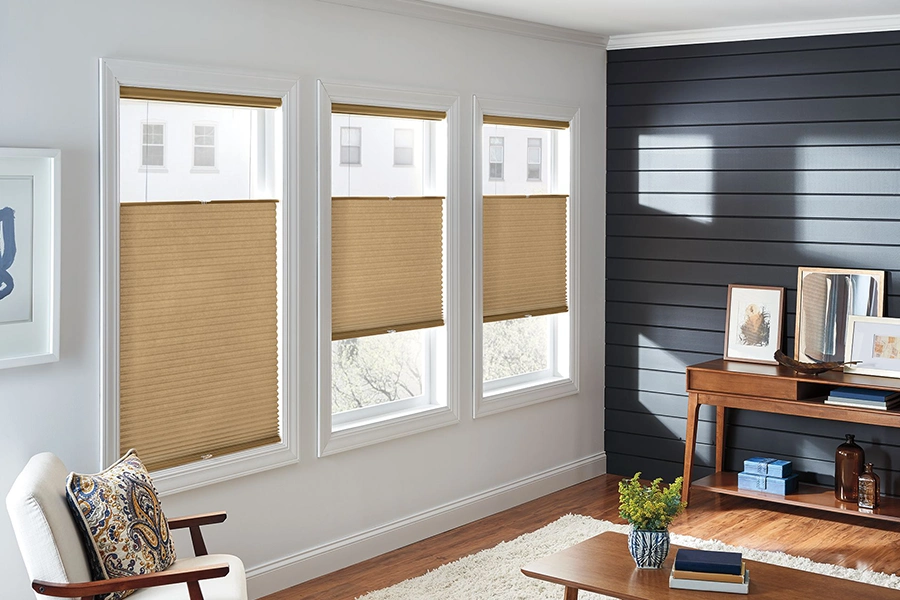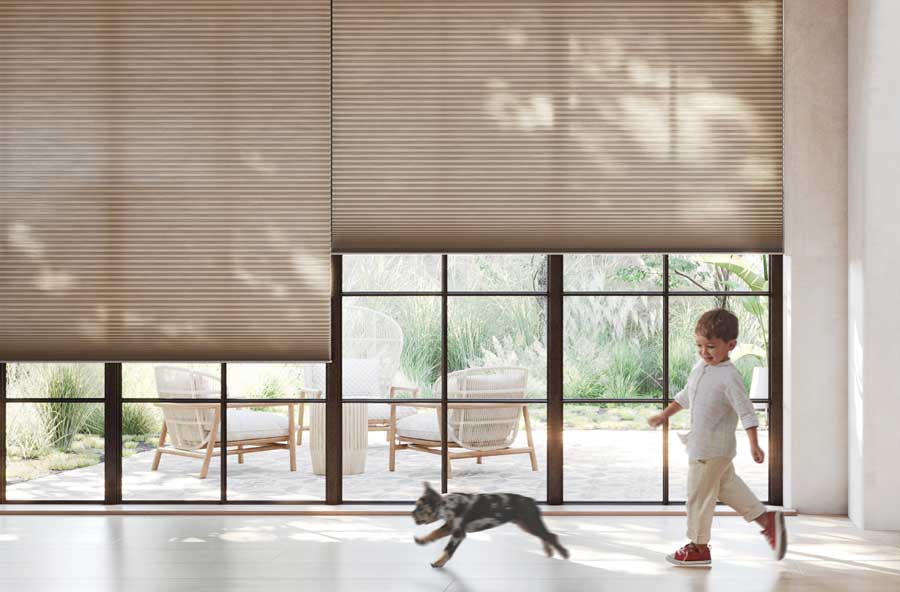The Ultimate Overview to Blinds: Types, Benefits, and Selecting the Right Suitable For You
The world of window treatments is large and varied. Blinds are available in many styles, each offering unique benefits for different setups. Recognizing these alternatives is essential for making notified decisions. Furthermore, variables like material choice and room capability play a considerable duty. As one thinks about the perfect equilibrium in between aesthetic appeals and usefulness, the subtleties of determining and preserving blinds additionally arise as key components. What should one focus on when picking the perfect home window solution?
Kinds of Blinds: A Thorough Introduction
Blinds work as both aesthetic and useful aspects in interior decoration, providing various alternatives to suit varied preferences and demands. Amongst the most prominent types are Venetian blinds, defined by horizontal slats that can be changed for light control and privacy. Roller blinds, known for their simplicity and convenience, come in a range of products and patterns, making them suitable for contemporary and standard settings. Vertical blinds, typically made use of for larger home windows or moving doors, enable simple adjustment and are commonly made from textile or vinyl.
Roman blinds, with their sophisticated folds up, add a touch of refinement to any kind of area, while cellular tones provide insulation and power effectiveness. Additionally, bamboo blinds provide an all-natural, green alternative, instilling spaces with warmth. Each type has unique attributes and designs, making sure homeowners can locate the best fit for their certain style and practical requirements.
Benefits of Installing Blinds in Your Home
The setup of blinds in a home uses several substantial benefits. They provide boosted personal privacy control, enabling property owners to regulate visibility from the exterior. Furthermore, blinds add to energy effectiveness by helping to manage interior temperatures, reducing the dependence on heating and cooling down systems.
Improved Privacy Control
Mounting blinds offers a significant advantage in personal privacy control when home owners look for to improve their living spaces. Blinds give a versatile remedy for controling presence from both the interior and outside of the home. By changing the slats or raising the blinds, people can easily take care of the quantity of light getting in while all at once blocking the view from outdoors. This flexibility enables home owners to produce a comfortable ambience without giving up all-natural light. Additionally, numerous styles and materials are available, ensuring that property owners can choose options that seamlessly mix with their style while boosting privacy. Ultimately, the installation of blinds offers as a reliable ways to safeguard individual room, encouraging relaxation and tranquility of mind within the home atmosphere.
Power Efficiency Renovation
Mounting blinds not just improves personal privacy but also substantially adds to energy performance in the home. By controling natural light and minimizing warm transfer, blinds can help keep a consistent interior temperature level. Throughout warmer months, shutting blinds can shut out extreme sunlight, thus decreasing the reliance on air conditioning. On the other hand, in cooler months, they can provide insulation by capturing heat, reducing heating costs. Furthermore, energy-efficient blinds, such as cellular shades, are developed especially to reduce energy loss. By buying high quality blinds, house owners can develop an extra comfy living atmosphere while also lowering power bills. Inevitably, the installment of blinds works as a sensible service for those looking for to boost both comfort and energy performance in their homes.
How to Choose the Right Blinds for every Area
Exactly how can one establish one of the most suitable blinds for each room in a home? The selection process begins with assessing the space's function and atmosphere. In living areas, flexible blinds that permit light control while ensuring personal privacy are perfect. In bedrooms, blackout blinds can improve sleep high quality by shutting out external light.
Restrooms and kitchen areas require moisture-resistant alternatives to stand up to moisture, making vinyl or synthetic wood blinds ideal selections. In addition, the preferred visual plays an essential function; coordinating blinds with the room's decor boosts the overall atmosphere.
Consider the quantity of natural light each space gets; lighter blinds may be preferable for dark rooms, while darker options can include warmth to sunlit rooms. Ultimately, comprehending specific demands and preferences for functionality and design will certainly lead homeowners in making informed choices customized to every space's distinct needs.
Product Options: Timber, Plastic, Fabric, and More

Timber Blinds Advantages
Timber blinds are a preferred option among property owners looking for a blend of looks and capability. One considerable benefit of wood blinds is their all-natural beauty, offering a cozy and welcoming look that improves any type of indoor decoration. They are readily available in numerous finishes and colors, enabling personalization to match individual style. In addition, timber blinds supply exceptional light control and privacy, as their slats can be quickly readjusted to filter sunshine while maintaining seclusion. Their resilience is one more benefit; with correct treatment, wood blinds can last for many years without shedding their allure (Phoenix plantation shutters). They have protecting residential or commercial properties, aiding to control interior temperature levels and possibly lowering power expenses. On the whole, timber blinds merge beauty and usefulness, making them an ideal selection for many houses
Plastic Resilience Includes
Vinyl blinds stand apart for their extraordinary durability, making them a functional option for various settings. These blinds are immune to wetness, making them excellent for areas such as bathroom and kitchens where moisture can be a problem. Unlike timber, vinyl does not warp, crack, or discolor under sunlight, making certain durable performance and minimal upkeep. Furthermore, they are available in a variety of shades and designs, permitting property owners to tailor their look without sacrificing longevity. Plastic blinds are additionally simple to clean; an easy wipe with a wet fabric is commonly enough to keep them looking fresh. Overall, their strength and low upkeep make vinyl a preferred choice among house owners seeking both capability and aesthetic charm.

Material Options Summary
Blinds are available in a range of material choices that accommodate various aesthetic and practical needs. Typical materials include material, timber, and vinyl, each offering one-of-a-kind benefits. Wood blinds provide a classic, warm aesthetic and superb insulation however require maintenance to prevent bending. Plastic blinds are resilient and moisture-resistant, making them excellent for high-humidity areas like cooking areas and washrooms. Textile blinds, available in numerous colors and patterns, use flexibility and gentleness, enhancing home style while giving differing levels of light filtering. In addition, alternatives like faux wood use the appearance of natural timber with included sturdiness. When selecting blinds, it is important to examine the specific demands of each space to guarantee peak efficiency and design.
Determining and Installing Blinds: Tips for Success
Measuring and setting up blinds might seem straightforward, careful interest to detail is important for achieving an ideal fit. It is crucial to determine the window structure properly, keeping in mind both the width and height. For inside installs, subtract a small amount from the width to ensure a tidy fit, while outside installs must extend past the framework for better light control and aesthetic appeals. Utilizing a steel measuring tape is suggested for accuracy.
When mounting, collect all essential devices, such as a level, drill, and screws. Adhering to the manufacturer's guidelines is crucial to vinyl roller shades ensure appropriate installment. It is advisable to pre-drill holes to protect against damaging the braces. Furthermore, having a second person can make the process smoother, particularly when raising larger blinds. Lastly, after installation, examination the callous validate they operate smoothly and adjust as essential for maximum functionality.
Upkeep and Treatment for Lasting Blinds
Appropriate upkeep and treatment can considerably extend the life-span of window treatments. Routine cleaning is crucial; making use of a smart window shades soft towel or a microfiber duster can successfully eliminate dirt without damaging surfaces. For deeper cleaning, a gentle option of soap and water is suggested, applied with a soft sponge, ensuring that no moisture seeps right into the systems.
For material blinds, place cleansing is a good idea, while wood blinds need to be treated with a wood-safe cleaner to maintain their surface. Prevent subjecting blinds to too much dampness, warm, or straight sunshine, which can bring about bending or fading.
Furthermore, regular examination of systems and cords can prevent wear and tear. It's a good idea to comply with maker standards for certain materials, as various blinds may have unique treatment needs. By embracing these basic maintenance methods, property owners can ensure their blinds continue to be functional and aesthetically pleasing for many years to come.
Frequently Asked Inquiries
Can Blinds Help In Reducing Power Costs in My Home?
Blinds can successfully reduce energy expenses in a home by giving insulation, blocking warm during summer, and keeping warmth in winter months. Their capability to manage light and air circulation enhances energy efficiency throughout the year.
Are There Child-Safe Options for Blinds?
Yes, there are child-safe options for blinds. These consist of cordless layouts, retracting cords, and security devices that remove dangling cords, making certain a secure atmosphere for kids while maintaining functionality and aesthetic allure in homes.

Just How Do Blinds Contrast to Curtains or Shades?
Blinds commonly provide extra exact light control and room performance than drapes or tones. Phoenix custom blinds. They are frequently easier to preserve and clean up, while drapes supply a softer visual, and shades can offer varying insulation benefits
Can I Customize the Design And Color of My Blinds?
Yes, blinds can be customized in both design and color. Various suppliers provide a large range of choices, permitting customers to pick materials, patterns, and tones that fit their individual visual and home style.
What Is the Average Life-span of Different Kinds of Blinds?
The ordinary lifespan of blinds varies: wood blinds last 5-10 years, synthetic wood 7-10 years, aluminum 5-10 years, and fabric tones around 5 years, depending on exposure, maintenance, and usage to sunshine.
Kitchen areas and shower rooms require moisture-resistant options to endure moisture, making vinyl or faux wood blinds suitable selections. Timber blinds supply natural beauty and heat, while plastic supplies resilience and convenience of maintenance. One site substantial advantage of wood blinds is their natural beauty, offering a warm and inviting appearance that enhances any interior decor. Additionally, timber blinds supply superb light control and personal privacy, as their slats can be quickly readjusted to filter sunshine while keeping privacy. For fabric blinds, place cleansing is advisable, while wooden blinds ought to be treated with a wood-safe cleaner to maintain their surface.